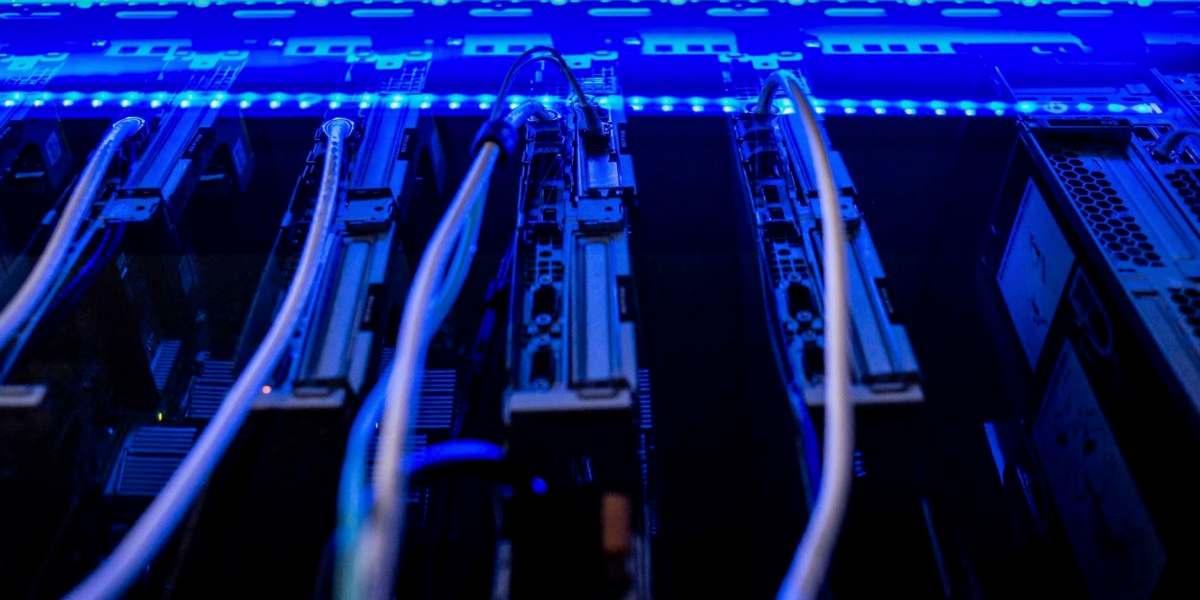Immersion cooling is a method of cooling computer components, typically servers or data center infrastructure, by submerging them in a thermally conductive liquid coolant instead of using traditional air cooling methods. In immersion cooling, the electronic components are fully submerged in a dielectric fluid, which absorbs the heat generated by the components and transfers it away more efficiently than air. The process works by bringing the liquid coolant into direct contact with the heat-generating components, such as CPUs, GPUs, memory modules, and other chips. As these components operate, they generate heat, which is quickly absorbed by the surrounding liquid. The heated liquid then circulates away from the components to a cooling system, where the heat is dissipated, either through a heat exchanger or by direct contact with a cooling system, such as a radiator or a cooling tower.
The immersion cooling market is projected to grow from USD 0.4 billion in 2023 to USD 2.1 billion by 2031, at a CAGR of 24.1% from 2023 to 2031. The primary reason for this market’s growth is the growing demand for immersion cooling solutions for efficient cooling systems that can handle the increasing heat generated by high-performance computing and blockchain applications.
Download PDF Brochure: https://www.marketsandmarkets.com/pdfdownloadNew.asp?id=107040948
Immersion cooling offers several advantages over traditional air cooling methods, including:
-
Improved thermal efficiency: Liquid coolant has a higher heat capacity and thermal conductivity compared to air, allowing for more efficient heat transfer and lower operating temperatures.
-
Reduced energy consumption: By operating at lower temperatures, immersion cooling systems can reduce the need for energy-intensive air conditioning systems, leading to lower overall energy consumption and operating costs.
-
Increased density: Because immersion cooling eliminates the need for bulky air cooling infrastructure, it allows for higher component density within a given space, leading to more efficient use of data center floor space.
-
Noise reduction: Immersion cooling systems can operate more quietly than traditional air-cooled systems since they eliminate the need for fans and other noisy cooling components.
-
Protection from environmental contaminants: Submerging components in a sealed liquid environment helps protect them from dust, moisture, and other environmental contaminants that can degrade performance and reliability over time.
What are the drawbacks of immersion cooling?
-
Initial Cost: Implementing immersion cooling infrastructure can involve significant upfront expenses compared to traditional air cooling methods. The cost includes specialized equipment such as tanks, pumps, and heat exchangers, as well as the dielectric fluid itself.
-
Liquid Compatibility: Compatibility issues may arise between the dielectric fluid and certain electronic components. Some materials used in electronic devices may degrade or corrode when exposed to certain types of coolant, potentially leading to component failure or reduced lifespan.
-
Maintenance Complexity: Immersion cooling systems require specialized maintenance procedures compared to air cooling systems. This includes regular monitoring of fluid levels, filtration, and system cleaning to prevent buildup and maintain optimal performance.
-
Limited Market Adoption: Immersion cooling technology is still relatively new and less widely adopted compared to traditional air cooling methods. This limited market penetration may result in fewer available solutions, higher costs for components and services, and a smaller pool of skilled technicians capable of servicing immersion cooling systems.
-
Environmental Impact: Although immersion cooling can reduce energy consumption and operating costs, there are environmental concerns associated with the disposal and recycling of dielectric fluids. Proper disposal or recycling methods must be followed to minimize environmental impact and comply with regulations.
Get Sample Copy of this Report: https://www.marketsandmarkets.com/requestsampleNew.asp?id=107040948
Immersion Cooling Market Segments
Based on application
- High-performance Computing
- Artificial Intelligence
- Edge Computing
- Cryptocurrency Mining
- Others (Cloud Computing, Enterprise Computing)
Based on type
- Single-Phase Immersion Cooling
- Two-Phase Immersion Cooling
Based on the cooling fluid
- Mineral Oil
- Synthetic Fluids
- Fluorocarbon-based Fluids
- Other (Vegetable Oil, Bio-Oil, Silicone Oil, Deionized Water)
Based on the components
Get 10% Customization on this Report: https://www.marketsandmarkets.com/requestCustomizationNew.asp?id=107040948
Immersion Cooling Market Research/Analysis Report Contains Answers to your following Questions
- What is Immersion Cooling?
- What is the current size of the global immersion cooling market?
- Who are the winners in the global immersion cooling market?
- What are the key regions in the global immersion cooling market?
- What is the major type of Immersion Cooling technology used in the global market?
Detailed TOC of Global Immersion Cooling Market
► Introduction of the Immersion Cooling Market
- Overview of the Market
- Scope of Report
- Assumptions
► Executive Summary
► Research Methodology of Market Reports
- Data Mining
- Validation
- Primary Interviews
- List of Data Sources
► Immersion Cooling Market Outlook
- Overview
- Market Dynamics
- Drivers
- Restraints
- Opportunities
- Porters Five Force Model
- Value Chain Analysis
Inquire Before Buying: https://www.marketsandmarkets.com/Enquiry_Before_BuyingNew.asp?id=107040948
► Immersion Cooling Market, By Application
► Immersion Cooling Market, By Type
► Immersion Cooling Market, By Cooling Fluid
► Immersion Cooling Market, By Components
► Immersion Cooling Market, By Geography
- North America
- Europe
- Asia Pacific
- Rest of the World
► Immersion Cooling Market Competitive Landscape
- Overview
- Company Market Ranking
- Key Development Strategies
► Company Profiles
► Appendix




